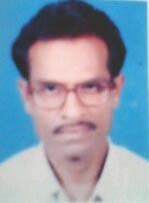On a sultry hot typical Jharkhand summer afternoon, we sat around a small four legged table, trying to shade ourselves from the sun. As we shifted between the shadowy patches that the walls, windows and trees had carved out for our convenience inside the room, we struggled as a group to come to a consensus on what we wanted to say about the river Damodar. All of us from mixed backgrounds with different histories, locations, lifestyles and education levels had encountered a diverse mix of ideas and conflicts in perspectives and understanding which we had to work around.
We tried to brainstorm on all the issues that are affecting those who live along the banks of the river. There was pollution, scarcity of water and increased toxicity of old water sources, the animals and birds in the area were fast disappearing. Some of us felt that 90 percent of the people living in the area are actually impacted by water pollution. Some members in the group also felt that people residing on the banks of the river are not fully aware of the pollution levels in the river. How do we begin dialogues in the community on the same? Can our research process help to initiate these dialogues with community?
Were not many of these things already well studied and highlighted by several researchers, activists and actors in civil society in the past several years? There have been repeated protests, scientific studies, political campaigns, intellectual writings and research on the Damodar, and yet has not the pace of change been very slow? The responses lukewarm and in fits and starts. As we approached the dead end of the argument, one of the women in the group shared ‘We will not discuss the Damodar as a polluted or destroyed river, for us Damodar is our life and we have come to cherish and revere it. We must let people know that.’ Damodar is not just a river, it is our culture, it is our lifeline. If the Damodar dies, we too will die, we concluded.
We decided to thus facilitate in bringing those voices of common people residing around the river, and their perspectives and understanding on how the Damodar brought in a core identity and sense of self for them.
By Sayantoni Datta
